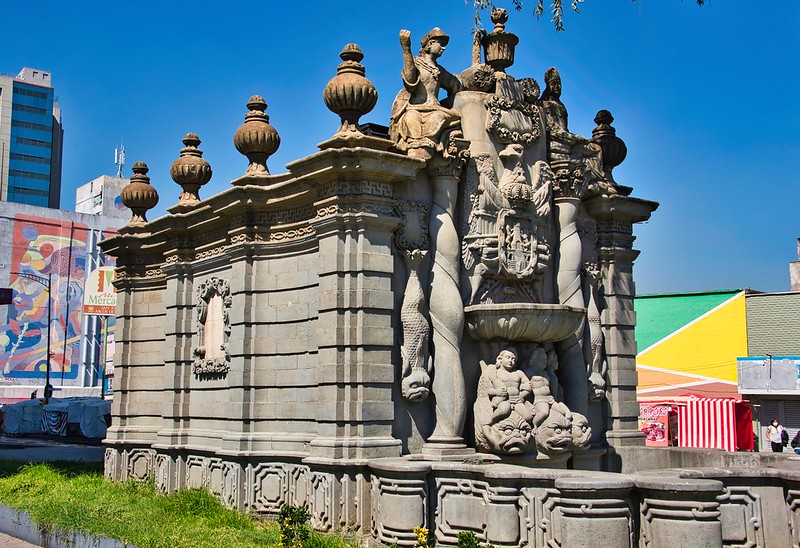
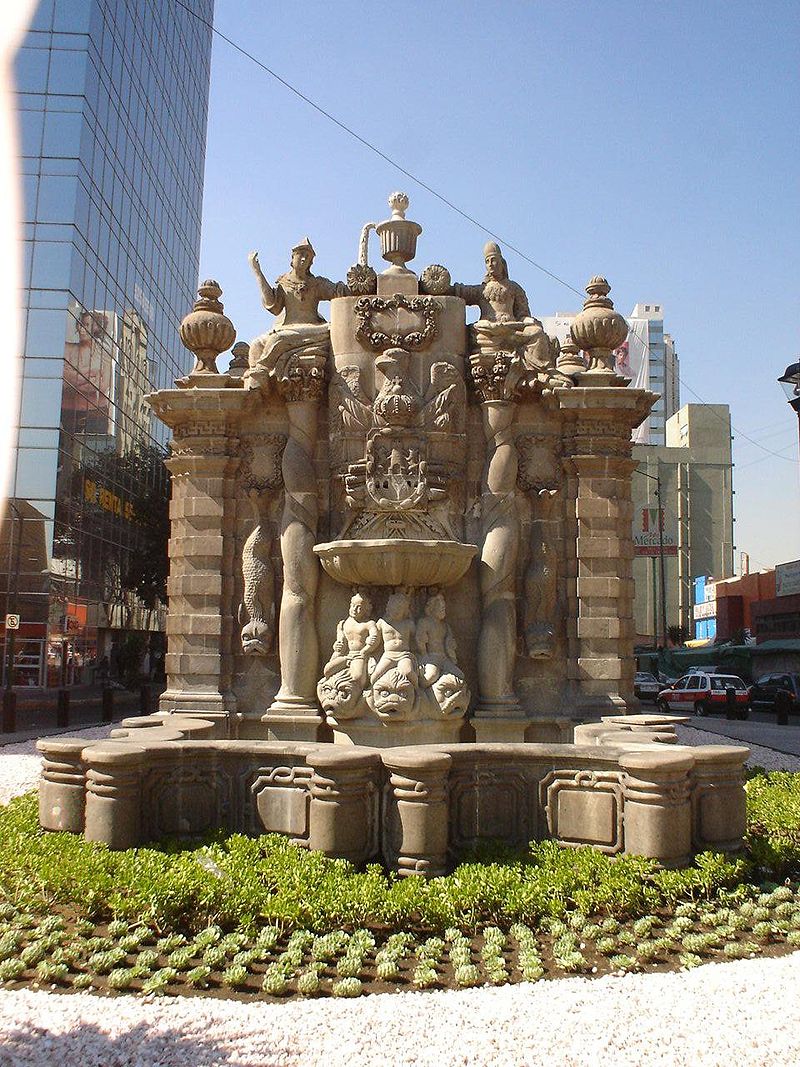
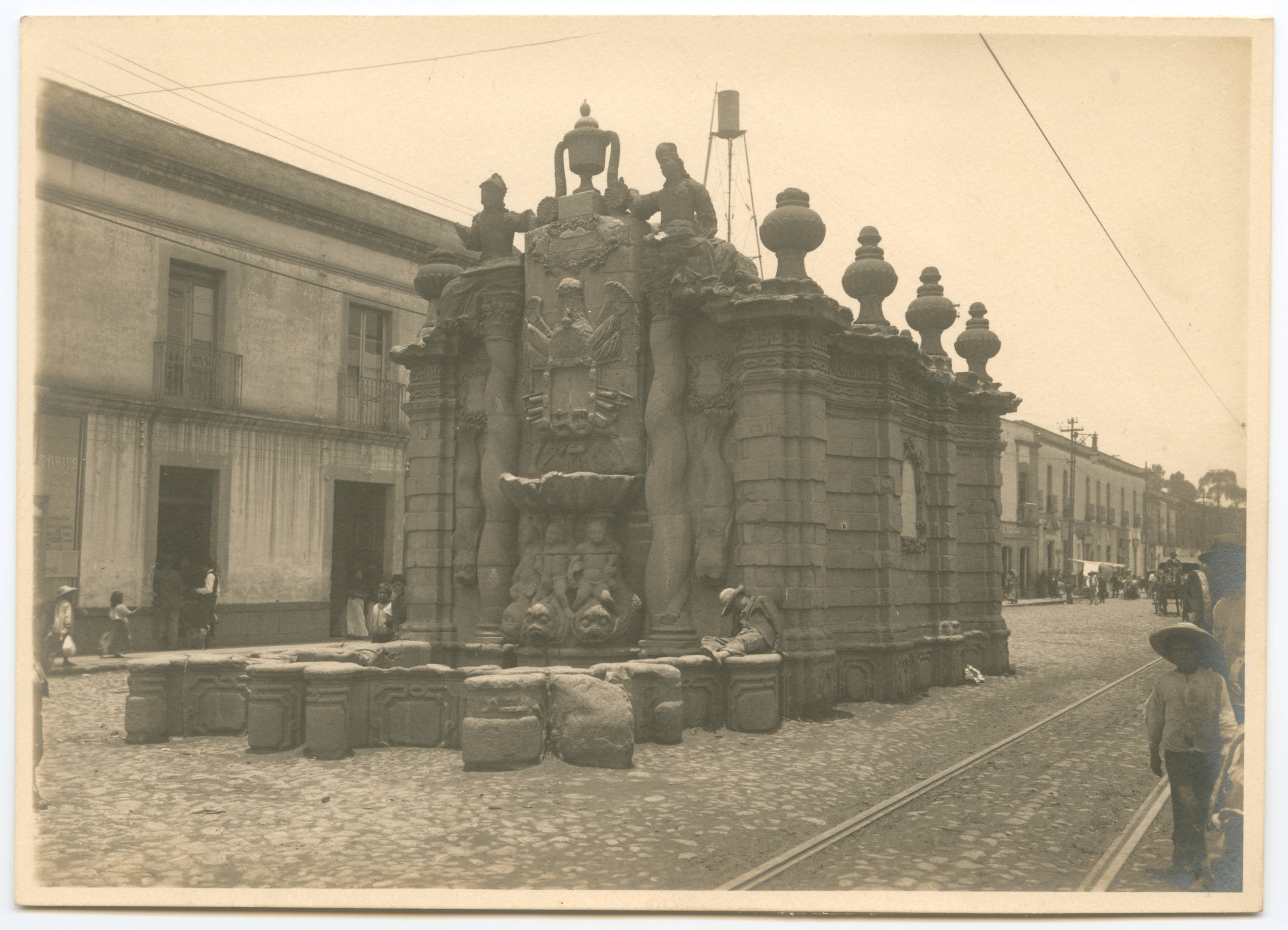

The Salto del Agua fountain is the centerpiece of a major intersection. It’s the sculptural work that drew people to the area for generations, and it’s still the namesake of the neighborhood. There’s a small chapel facing the fountain that goes by the same name. And of course, there’s the San Juan Market which, like all the San Juan Markets, broke off from the original in the mid-20th century.
The fountain itself might be almost lost in all of this tumult. But it’s an excellent sculptural example of the colonial period and quite a sight to behold. The fountain was originally part of the Santa Fe and Chapultepec aqueducts. A colonial method for providing water to the city, it worked for more than a century.
Designed by the architect, Ignacio Castera, and completed in 1779, it’s built entirely from quarried stone. The east-facing façade is heavily adorned by sculptural works from which water gushes out into the frontal basin. Two meandering Solomonic columns frame the central sculptural work. This was near the end of the 904 arches that led from Chapultepec. This stretch of it was called, as is the avenue on either side even today, the Arcos of Belen. The remains of the arches can only be seen further up the avenue at the intersection of Avenida Chapultepec with Florencia/Monterrey.
The work we see today is actually a very respectable replica done by architect, Guillermo Ruiz, in 1948. The original was being badly eroded by pollution and acid rain, and so wasmoved to the Museo del Virreinato in Tepotzotlán, in Mexico State. The other fountain, the Fountain of Chapultepec, is original but was moved to its present location in 1921. It’s instructive in that one can see how badly it’s deteriorated. A third fountain, that of Izizaga, was a few blocks still further to the east below the Merced Monastery. It was entirely demolished late in the 19th century.
The Chapultepec Aqueduct followed the same aqueduct line that had been used, and designed, by the Mexica people of in ancient Tenochtitlan. It’s not all that remains so long as people continue to inquire as to its purpose, significance, and meaning, even today.
Sources cited on this page:
Cupa.com.mx, Ángeles Moreno:
Fuente e iglesia del Salto del Agua legado de nuestra historia
 +525557610979
+525557610979
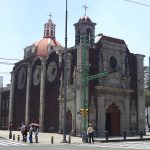
Nearest at 0.04 kms.
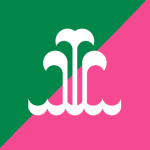
Nearest at 0.06 kms.

Nearest at 0.09 kms.
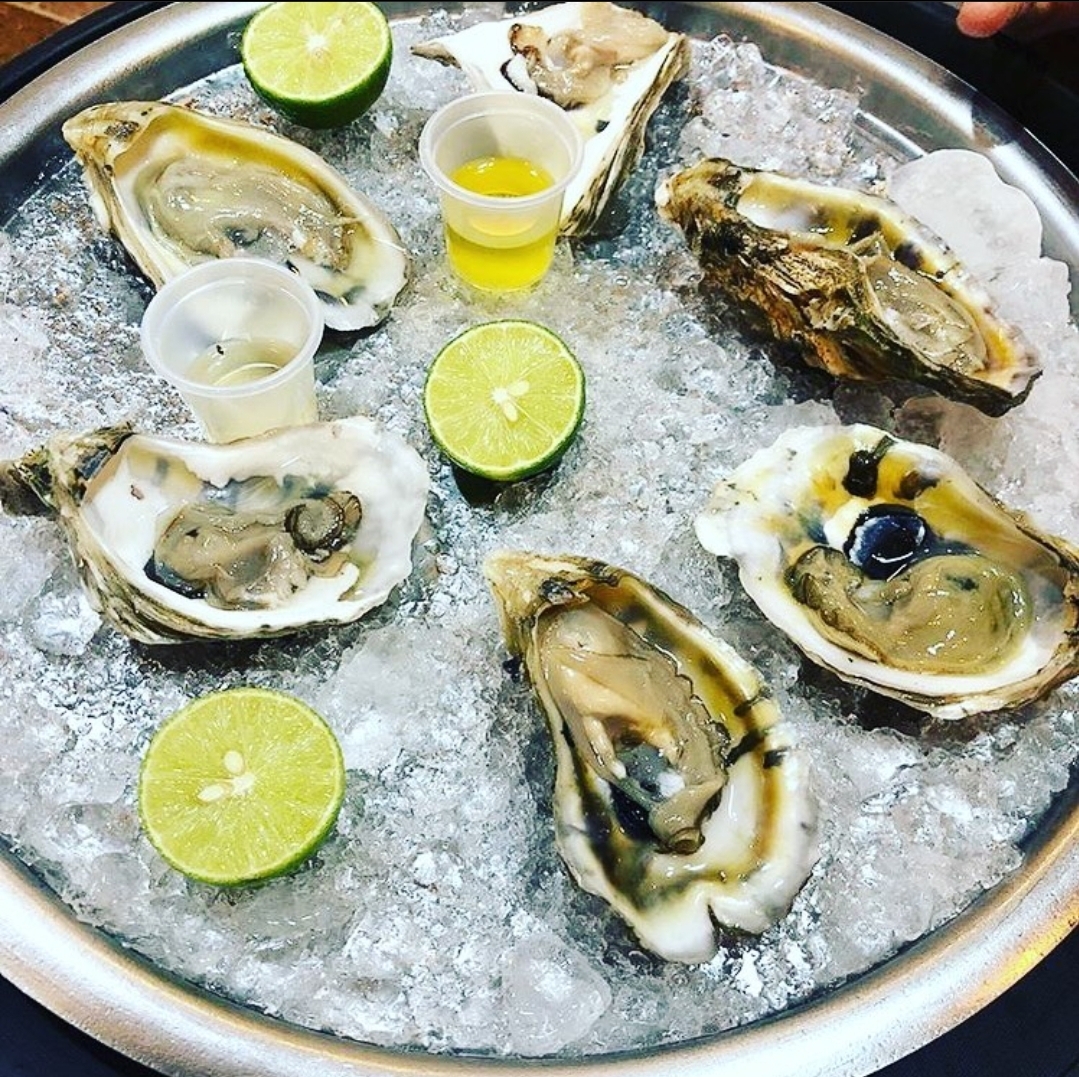

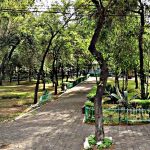
One of Mexico City's oldest continuously inhabited little towns . . .

A sublime Italian Renaissance style has greeted passersby for nearly 120 years. Here's what it's about.
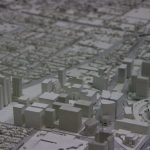
An incredible 3D rendering of one of the biggest cities in the hemisphere.
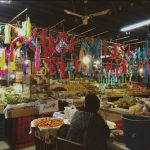
One of the popular public markets on Eje Central.

One of the Garibaldi area's strongest artistic clearinghouses.